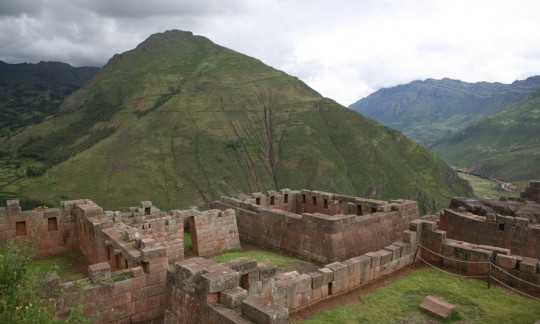
Ten minutes after I got to Cusco, a guy took a laptop from the trunk. I chased him and got it back. Twenty minutes later, as we were away from the truck, some other dude tried to force into the trunk, breaking the lock, fortunately with no success.
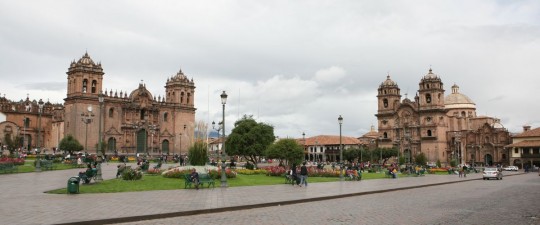
That was a warm welcome in the charming and colorful city built by the Spanish and located in the mountains at 3,500 meters high. After these events, we spent our time locking and unlocking doors and trunk, and paying extra attention to the surroundings.
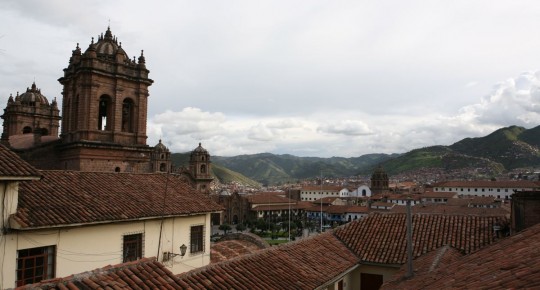
We arrived on Thursday and as Dan was leaving us the day after, we hurried to take a tour of the city in the afternoon. It was great to stroll along the streets of one of the nicest city we saw so far. The highlight of the day was a visit of the food market where we had coca leaves tea and bought a massive amount of cheese, the best I had in a long time. Peruvians are good bakers too, and at time, the bread can be similar to the one you find in France.
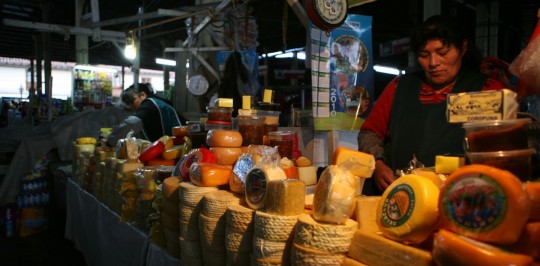
We took a hotel room (Inka’s Inn, US$4 per person), and after this long day, I just stayed in the room eating cheese and organizing photos I took. Of course in the morning, I was unable to get hot water. That became a classic, as always hotel owners promise it to you, and you never get it. Hot water became our Machu Picchu. Always wanted to see it, with no success.
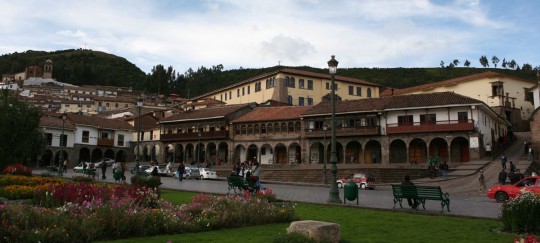
I drove Dan to the airport, and got back to our street, where our French friends had parked their RV as well.At the beginning of the afternoon, we went back to the market to buy food, and left all together for a two-days excursion in the sacred valley. Our first stop will be Moray, a stunning site used by the Incas as an open-air crop nursery. There, depressions are lined with terracing.
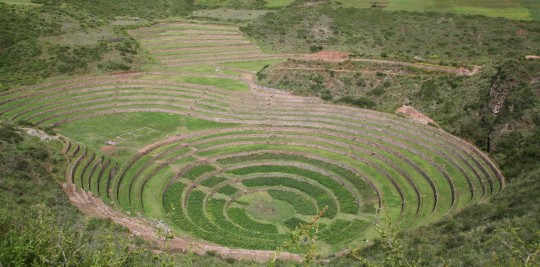
We slept there, covered with many blankets, as the cold weather is here to stay for at least two weeks, following us through Peru and Bolivia. (Free camping is allowed on the site’s parking)
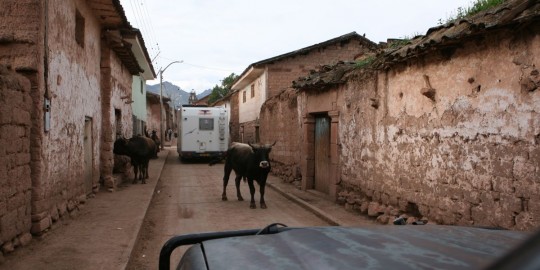
The following morning, we departed for Pisac, a major site of the Sacred Valley. This is definitely the substitute for Machu Picchu, as the latest will be closed for few more weeks and we will not be able to visit it in this expedition.
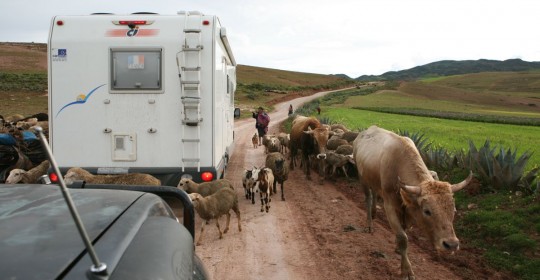
Pisac is an Inca fortress 30 kilometers of Cusco. It took us three hours to visit the site, larger than Machu Picchu. The walk through the ruins goes across terraces, temples and housings, purification baths and water channels. Everywhere you can admire the fine masonry work of the Incas.
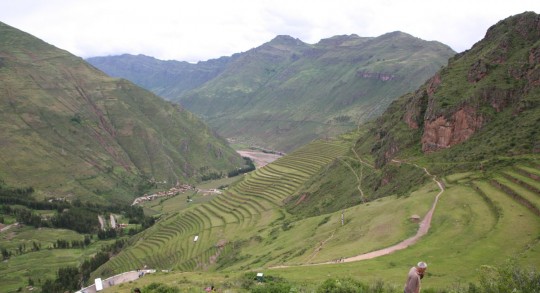
Later, we rolled back to Cusco, and as night was falling, we stopped in Chinchero to admire the church and the plaza.
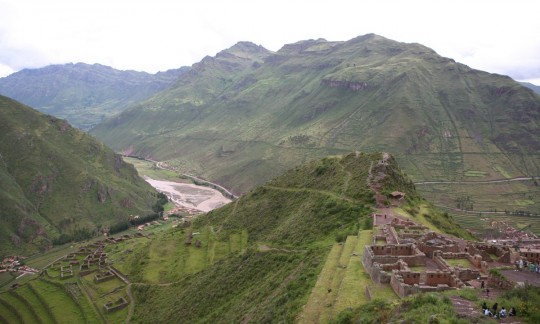
Back in Cusco, we returned to the same hotel we spent our first night (to make sure water was always as cold) and had a great pizza in the same street. It is nice once in a while to have something to eat from the old country.
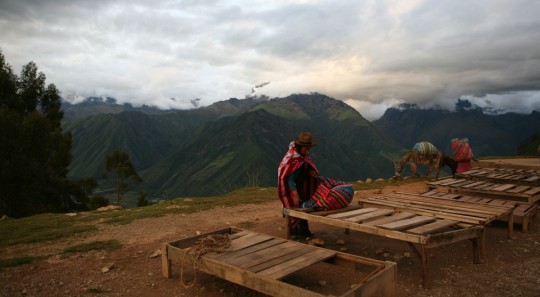
We spent the following morning walking in the city and went back again at the food market. The next step was the Lake Titicaca, and we wanted to make sure we had enough to eat while up there.
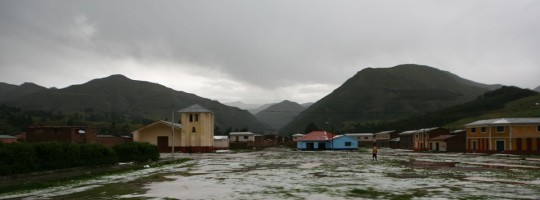
At the beginning of the afternoon, we left the French convoy, and started our trip to the lake. We went up high in the mountains, and saw snow in some villages. We also noticed several scary looking peaks with eternal snowcaps or glaciers.
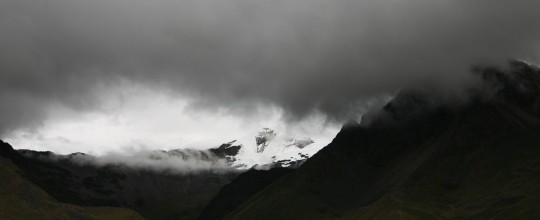
It took up six hours to go all the way to Puno, on the border of the lake Titicaca, and there, we camped in the parking of a hotel.
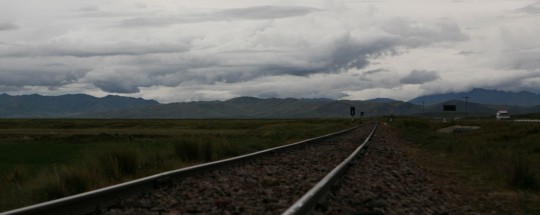
For US$15 (ouch!), in addition to authorize us to park they let us also use the showers. At this point we were so tired that we accepted the price. I cooked some pork with honey I bought at the market, and went to sleep under heavy rain.
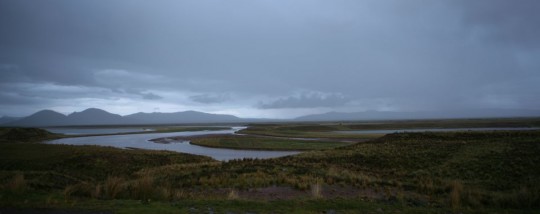
In the morning, we wake up early to catch the boats going to the floating islands. The islands are man-made and built with layers of tortora reeds, a common plant in the shallows of the lake. The Uros Indians living on these islands live mainly of tourism, fishing and hunting. Life therehas never been easy, as freshwater is hard to come by, and the reeds rot rapidly, necessitating constant addition of layers.
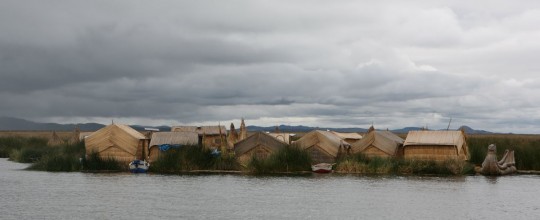
Despite these interesting facts, you can’t help but be put off by the transformation of the proud fishermen into touristic puppets. Back on the shore at noon, I was behind the wheel again, and drove straight to the Bolivian border, where new adventures were awaiting us.
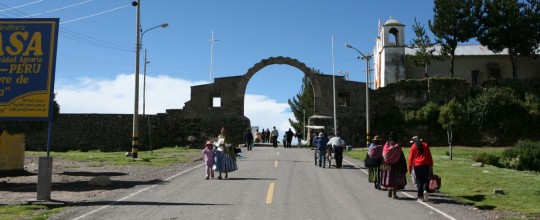
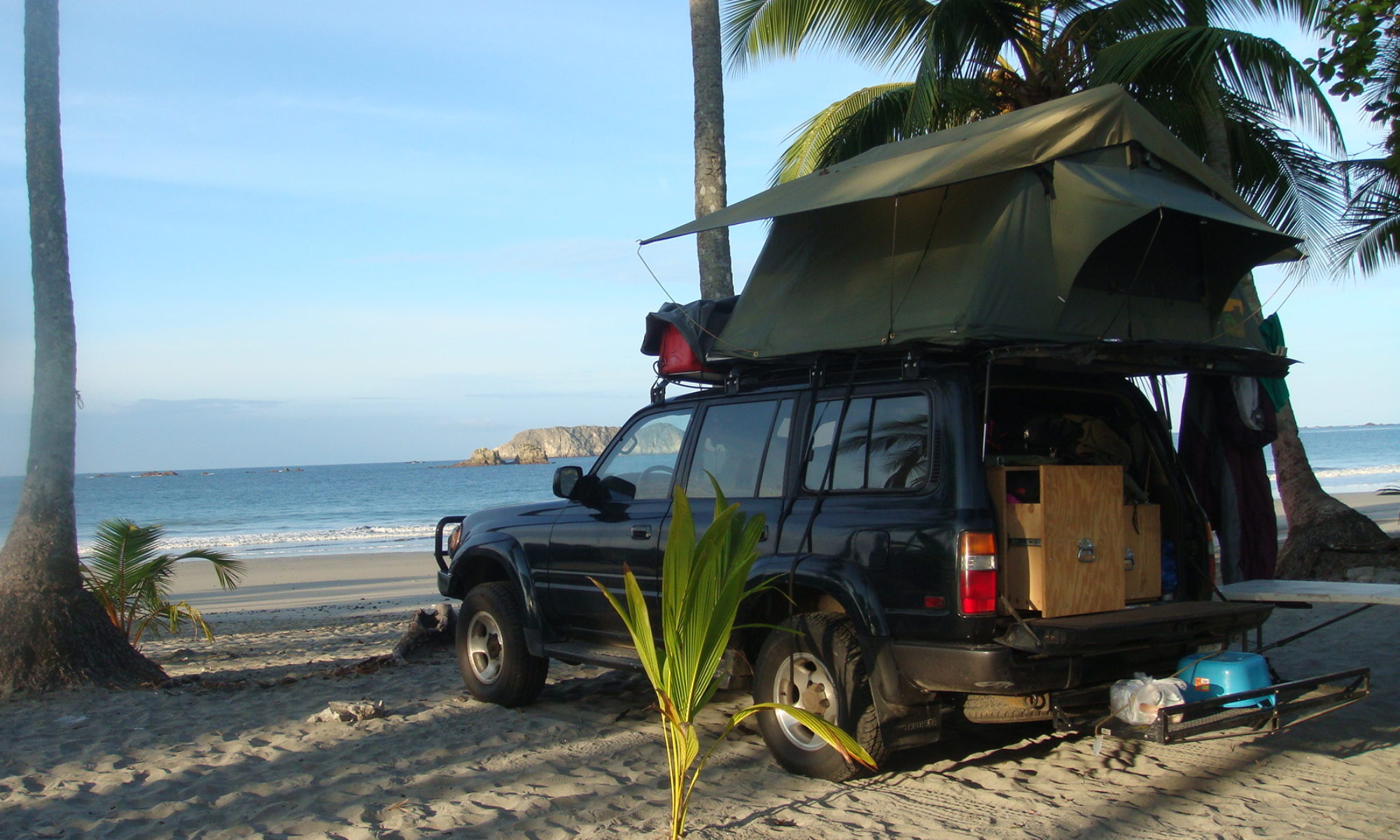
Wow, I would really like to be there enjoying all the people, their cultures, the mountains and the good food and hopefully strong coffee too. I’m a little jealous. I have been to Bolivia, hope you enjoy,
I’ve been following your blog for a couple of months. I’m glad you guys are ok after the earthquake in Chile.
Great set of photos and travelogue. Street crime is a big issue in Cusco–I’ve heard that before from others. I agree that Pisac looks very similar to Macchu Pichu, without all the crowds that mar some visitor’s MP experiences. Continued safe journeys to you both…
Merci de partager ton aventure avec tout le monde; c’est bien agreable de suivre ton parcours quand je suis coincee au travail!
Apres le tremblement de terre au Chili the 27 Fevrier, les routes dans le pays ont l’air d’etre assez impassables et les tremblements n’ont pas l’air d’etre termines (60 aftershocks jusqu’a present). Allez-vous changer d’itineraire vers l’Argentine??
Impressive report once again, Nic. Good job, man. Really sorry to hear about the attempted robberies.
Godspeed in Bolivia
As long as it stays with attemps and the heavy stuff stays out of sight, it will be okay.
Bienvenido a Bolvia, see you soon…
I just watched a report about Chile on CNN. They said that there is widespread looting taking place. The military has been deployed in the large cities to stop the looters. In the smaller towns, citizens are coming together to stop bands of outside looters from robbing their homes and businesses.
Are you planning on still turning right to reenter Chile or keep on going straight to Argentina? The infrastructure in Chile looks to be in shabbles.
Stay safe.
i was starting to believe that i might be the only woman which cared about this, at least at this point i understand i’m not loco 🙂 i will make it a point to have a look at some various threads soon after i get a tad of caffeine in me, it’s challanging to read without my coffee, cheers 🙂
Great journal!. I enjoy reading your journals – gives me an insight of what’s happening in diffferent parts of the world.
Safe Travel.
I’m sure Nick hasn’t commented yet on the earthquake because he is considering options with regards to Chile. All the road damage and bridge destruction in central and southern Chile, as we know, are likely to force changes to his original itinerary.
I had said before that the earlier TWE breakdowns and delays seem like a blessing in disguise if they kept Nick and Nadia from reaching Chile in time for the earthquake. We’ve all seen the photos from Chilean cities like Santiago and Concepcion. Even more dangerous, perhaps, than being in the cities during the earthquake was being at the seashore along the coast between those two cities.
We know how much Nick and Nadia love camping along the beach, and of course, looking at the map, you see that Chile is almost one long seashore. The smart people living or camping on the Chilean seashore fled the beach immediately after the earthquake hit. Within half an hour, three tsunamis did hit the Chilean coast with no official warning. The tsunamis drowned and swept many people away. There hasn’t been as much news coverage there because the media can’t reach the Chilean coast. Those who survived have been trapped along the coast by closed roads, and many have had little food, water, or medical assistance. It’s a very bad situation. Thank God Nick and Nadia were not camping on a south Chilean beach during that earthquake!
Here’s a link to an interactive road map which shows the hardest-hit areas.
http://www.msnbc.msn.com/id/35622589/ns/world_news-chile_earthquake
If you zoom that map out, you’ll see why I expect that Nick is going to choose to bypass Chile and instead go directly from Bolivia to Buenos Aires, Argentina, where he will pick up the transport to Africa. I don’t have any idea how safe or good that route is, but if it is safe and good, taking it will serve two purposes: avoiding the chaos and damage in Chile, and having a good chance to get TWE back on schedule, due to the shorter route. Nick has already expressed concern here about staying on schedule because delays reaching Buenos Aires will cause other problems for TWE later. There are certain places he needs to reach by certain dates due to weather and road conditions.
Love your posts. Thanks for keeping us updated.
Stay safe.
You must have been a fast runner in the attempted robberies.
Also glad you made it back in time to stop the other break in as well. Glade no windows were broken as well. I like the the land scap pictures very much in this blog. Very breath taking 4 sure.
@Marco I know what your mean. In todays economy its difficult to find a job that pays good and is consistent. I have found that if you just work hard and are consistent you can succeed. Look at the writer of this article, they are clearly hard working and have just been consistent over time and are now enjoying at least what would appear as somewhat of a success. I would encourage everyone to just keep hustling and moving forward.